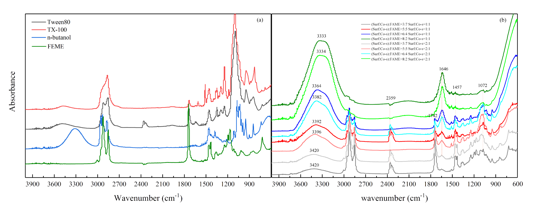Fatty Acid Methyl Ester-based Microemulsion Effectively Increases the Polycyclic Aromatic Hydrocarbon (PAH) Removals in Soils
Polycyclic aromatic hydrocarbons (PAHs), which pose a threat to human respiratory system, circulatory system, and ecological safety due to their carcinogenic genetic toxicity, mutagenicity and carcinogenicity are environmental pollutants in soil and groundwater. PAHs have accumulated in the environment and seriously affect soil quality in the past decades. A lot of researchers in the world attempted to develop bioremediation methods to degrade PAHs in industrial and agricultural soils. However, it is proved that bioremediation technology has poor remediation efficiency on contaminated soils with high concentrations of PAHs from industries.
Currently, microemulsions (MEs) have been widely used in many fields such as nanoparticle synthesis, liquid-liquid extraction, and other chemical engineering due to their low interfacial tension and good solubilization ability. However, there are few studies on MEs used to remediate PAH contaminated soils. With these in mind, fatty acid methyl ester-based microemulsion was prepared and characterized, which could effectively remove 16 PAHs from the soils in coking plant sites (CPS) in Shijiazhuang city and the Capital Steel Group (CSG).
This article described the removal mechanism of PAHs and the phase behavior of the surfactant-water-alcohol-oil system during the washing process of the contaminated soils using MEs.
Besides, MEs were fully characterized by measuring the particle size, surface tension, water content, infrared spectroscopy and Raman spectroscopy of the MEs. Results showed that the MEs obtained were transparent. The particle sizes of MEs decreased as the water contents increased. It was proved that the terminal hydroxyl group of the ME was hydrogen-bonded with the oxygen atom of the oxyethylene unit or the terminal hydroxyl group, resulting in peaks appearing in the high-frequency region of the infrared spectrum.
Compared with Tween 80 or Triton 100 (TX-100), the ME produced a larger oil-water interface, which was conducive to increase high PAH removals. Co-surfactant acted as a coupling agent between surfactant, FAME and water, and it could stabilize the ME by increasing the total interface area. Moreover, the hydrophobic core was conducive to the accumulation of PAHs in PAH micelles. More PAHs were dissolved as the apparent water solubility increased.
The study also recovered part of FAME and TX-100 in waste ME. Products in the soil and waste ME were analyzed after washing treatment. Results concluded that both microbial degradation and Fenton oxidation could effectively reduce the methyl stearate and other products in the treated soils and waste ME.
This work was supported by the National Key R&D Program of China and the Strategic Priority Research Program of CAS.

Fig. 1. A figure illustrating FT-IR spectra of the MEs and their components (Image by GONG Zongqiang’s group).
Contact
YUE Qian
Institute of Applied Ecology, Chinese Academy of Sciences
Tel: 86-24-83970324
E-mail: yueqian@iae.ac.cn